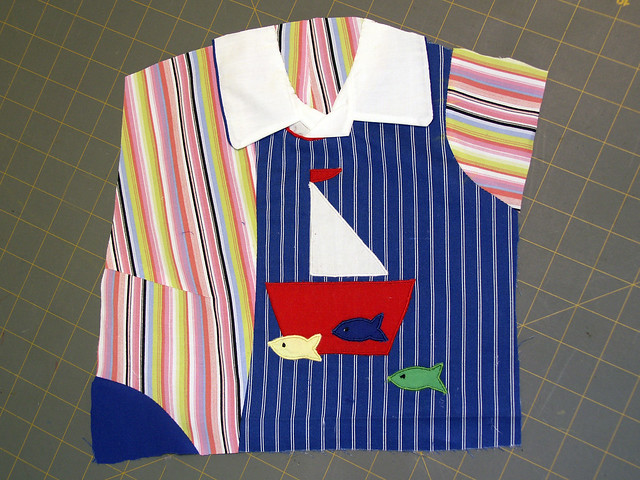Mini Keepsake Quilt-Along ~ Passage Quilting™ Tutorial ~ Part 2
 In Part 1 of the Mini Keepsake Quilt-Along, I cut my clothing into sections according to the architectural features I wanted to highlight. Now it is time to improvise a pattern based on those features to create blocks or sections.
In Part 1 of the Mini Keepsake Quilt-Along, I cut my clothing into sections according to the architectural features I wanted to highlight. Now it is time to improvise a pattern based on those features to create blocks or sections.
Tips on Improvisation
- Improvisation is simply creating without a pre-determined pattern.
- Take the piecing process one step at a time. (Don't over plan.)
- Allow yourself to be surprised by the outcome. There are no mistakes.
- Follow your heart. Find your rhythm of attention.
Creating Sections
- Start with any feature that resonates strongly with you.
- Square off your feature by filling in curves or odd angles.
- Continue to build and add to your section until you reach a sense of completion.
- Once you complete one section set it aside and start on the next section.
- Your finished sections should roughly have straight edges, but they can be any size or shape.
[slickr-flickr tag="mq2" size="m640" sort="description"]
Curve Piecing Technique
- Fill in the curve of a arm hole with a contrasting fabric.
- Layer fabrics right sides up to cut the line of the curve.
- Leave a 1/4 inch over hang on filler piece.
- With right sides up chalk along the curve line.
- Turn right sides together, match chalk marks and pin perpendicular to edge.
- Ease fabric between pins and sew along pinned edge with a 1/4" seam allowance.
- Remove pins and iron seam in one direction.
Hand Piecing a Neckline
- Arrange neckline on background fabric with right sides up. Pin in place.
- Hand stitch with matching thread using a hidden applique stitch.
- On backside carefully cut away as much bulk as possible from the collar.
- Trim background material to within a 1/4" of the appliqued seam.
Next Monday, in Part 3 of the Mini Keepsake Quilt-Along, we will arrange and build sections like a puzzle into finished mini quilt. On Wednesday I'll announce the winner of the Whip Up Mini Quilt Book giveaway along with a review of the book.
Did you learn anything about the way you see patterns by following your rhythm of attention? Any surprises? Please share!
